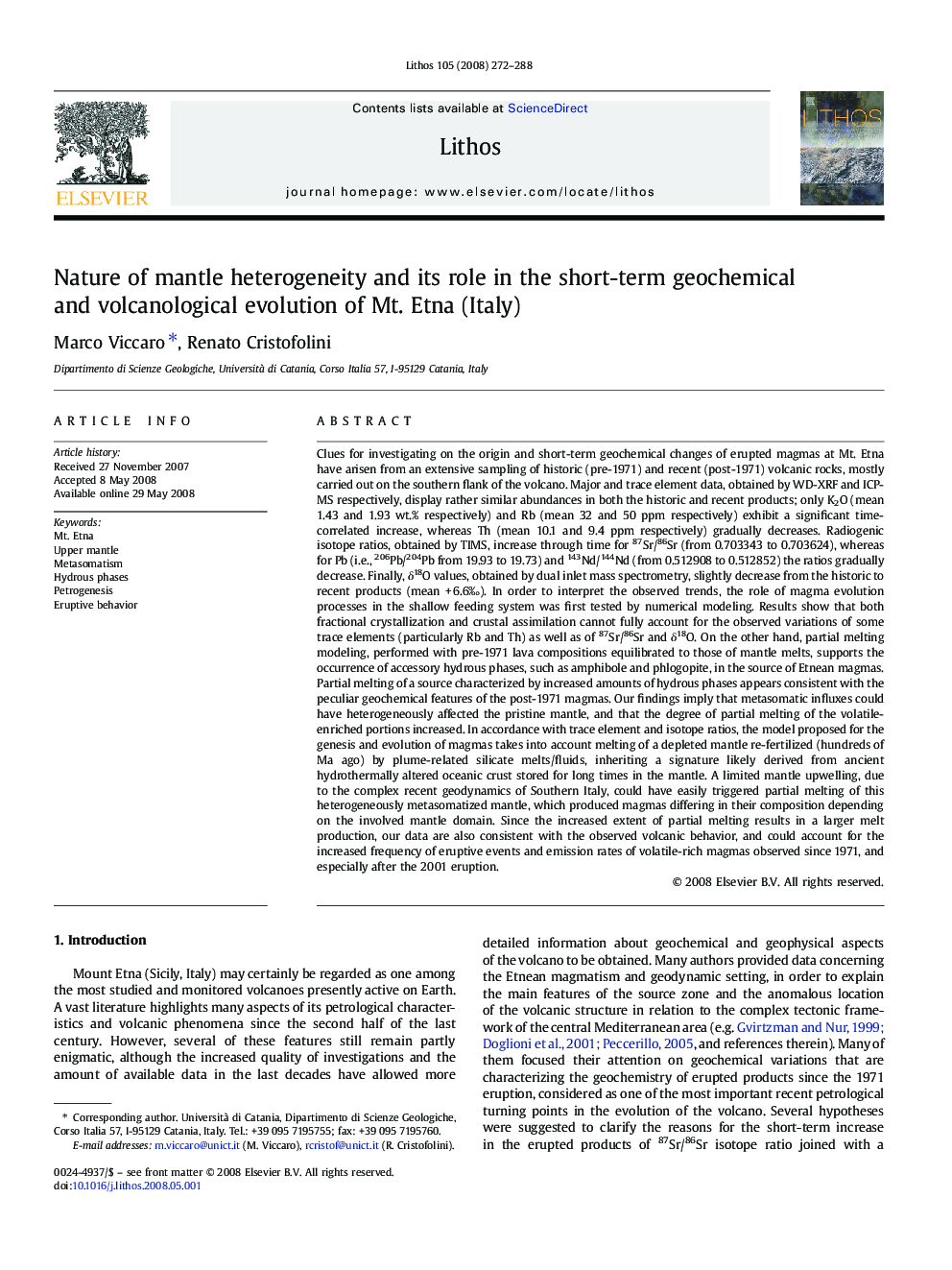| کد مقاله | کد نشریه | سال انتشار | مقاله انگلیسی | نسخه تمام متن |
|---|---|---|---|---|
| 4717572 | 1638752 | 2008 | 17 صفحه PDF | دانلود رایگان |

Clues for investigating on the origin and short-term geochemical changes of erupted magmas at Mt. Etna have arisen from an extensive sampling of historic (pre-1971) and recent (post-1971) volcanic rocks, mostly carried out on the southern flank of the volcano. Major and trace element data, obtained by WD-XRF and ICP-MS respectively, display rather similar abundances in both the historic and recent products; only K2O (mean 1.43 and 1.93 wt.% respectively) and Rb (mean 32 and 50 ppm respectively) exhibit a significant time-correlated increase, whereas Th (mean 10.1 and 9.4 ppm respectively) gradually decreases. Radiogenic isotope ratios, obtained by TIMS, increase through time for 87Sr/86Sr (from 0.703343 to 0.703624), whereas for Pb (i.e., 206Pb/204Pb from 19.93 to 19.73) and 143Nd/144Nd (from 0.512908 to 0.512852) the ratios gradually decrease. Finally, δ18O values, obtained by dual inlet mass spectrometry, slightly decrease from the historic to recent products (mean + 6.6‰). In order to interpret the observed trends, the role of magma evolution processes in the shallow feeding system was first tested by numerical modeling. Results show that both fractional crystallization and crustal assimilation cannot fully account for the observed variations of some trace elements (particularly Rb and Th) as well as of 87Sr/86Sr and δ18O. On the other hand, partial melting modeling, performed with pre-1971 lava compositions equilibrated to those of mantle melts, supports the occurrence of accessory hydrous phases, such as amphibole and phlogopite, in the source of Etnean magmas. Partial melting of a source characterized by increased amounts of hydrous phases appears consistent with the peculiar geochemical features of the post-1971 magmas. Our findings imply that metasomatic influxes could have heterogeneously affected the pristine mantle, and that the degree of partial melting of the volatile-enriched portions increased. In accordance with trace element and isotope ratios, the model proposed for the genesis and evolution of magmas takes into account melting of a depleted mantle re-fertilized (hundreds of Ma ago) by plume-related silicate melts/fluids, inheriting a signature likely derived from ancient hydrothermally altered oceanic crust stored for long times in the mantle. A limited mantle upwelling, due to the complex recent geodynamics of Southern Italy, could have easily triggered partial melting of this heterogeneously metasomatized mantle, which produced magmas differing in their composition depending on the involved mantle domain. Since the increased extent of partial melting results in a larger melt production, our data are also consistent with the observed volcanic behavior, and could account for the increased frequency of eruptive events and emission rates of volatile-rich magmas observed since 1971, and especially after the 2001 eruption.
Journal: Lithos - Volume 105, Issues 3–4, October 2008, Pages 272–288